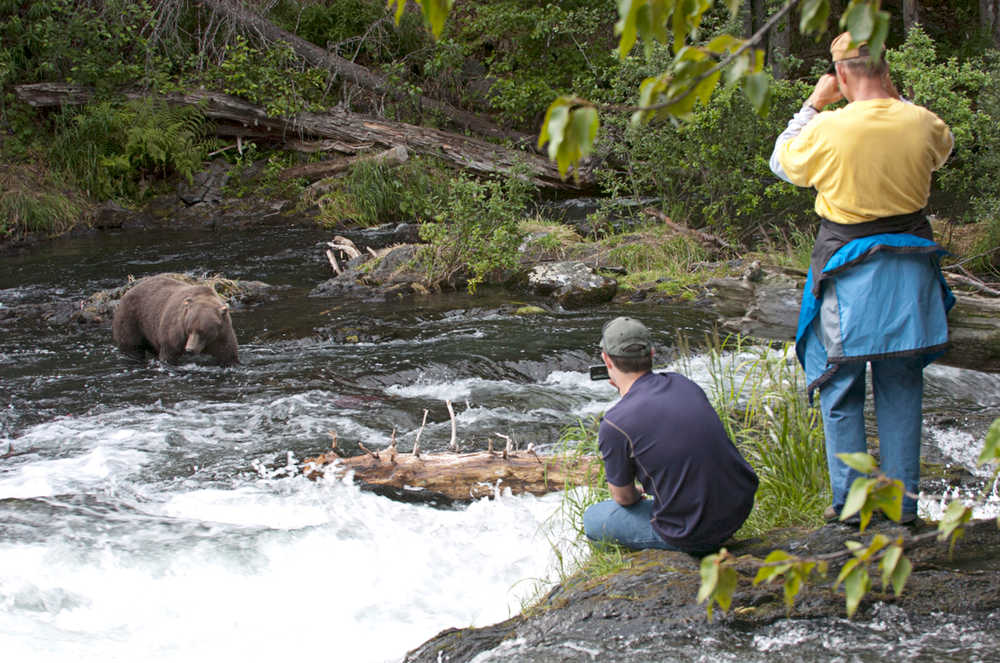Around the Kenai Peninsula, thawing layers of ice, snow can read like a fossil record. The emerging preserved trash, excrement and occasional carcasses are sending a message out to the hungry creatures waking from hibernation; lunch is in town.
Kenai Wildlife Refuge Park Ranger Candace Ward said with an early break up this year it is time for everyone on the peninsula to and prepare for the heightened activity of springtime wildlife.
When bears first start waking up, food is still relatively scarce, Ward said. They have to cover a lot of ground until the salmon start to run and then they are more concentrated to the rivers, she said.
For moose until the trees “leaf out” they will also be very mobile looking for bark and buds, Ward said.
Many females will soon give birth and are hungrier, testier and more protective of their space, she said.
Jeff Selinger, Area Biologist for Alaska Department of Fish and Game, said to be cautious during any encounter with wildlife. Every animal has had different experiences and varying tolerance, he said.
“You don’t know what they’ve been through lately,” Selinger said. However, residents have many ways to prepare their yards and their lifestyles for potential hungry mammalian visitors, he said.
Selinger said go to the dump more often and putting coolers and garbage in a garage or enclosed area. Pick up pet droppings and scrubb BBQ grills to ensure critters don’t decide a yard is somewhere to find a snack.
Selinger said to consider installing an electric fence for yards that house livestock or bees. In addition, he said birdfeeders and the seeds around them, should be cleaned up and stowed away until next winter.
“We don’t want bears to associate people and residence with food,” Selinger said. “Most coming out are pretty darn lean.”
Heightening awareness while commuting is good practice as well, Selinger said. Caribou and moose will be skirting the roadways as they spread out to search for calories to put on fat, he said.
The Kenai area has a large hare population, which means predators such as wolves, coyote, owls and hawks are also in higher numbers. These predators will also go after pets, Selinger said.
Selinger said to report any animal activity in populated areas, and “don’t take anything into your own hands.”
Fish and Wildlife Biologist Todd Eskelin said when out hiking to pay attention to the surroundings and bring adequate protection. Only use firearms if proficient at shooting, he said.
Bring bear spray and know how to use it, Eskelin said. Few bears can take a face full of mace and continue to chase someone up a tree, he said. Remember any deterrents have their limitations such as access, wind, temperature and maneuvering.
If able, hike in a group, and make noise, Eskelin said. He does not encourage jogging alone. A bear may hear a runner coming but won’t likely be able to move out of the way in time, he said.
There’s not substitute for using your senses and leaving an area that seems unsafe, Eskelin said.
Kelly Sullivan can be reached at Kelly.Sullivan@peninsulaclarion.com

